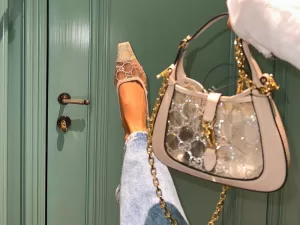A brief history of the walking cane
Ancient Egyptian rulers carried sticks to signify their seniority and importance. These varied from 90 cm long (3 feet) to 180 cm (6 feet), and had some form of ornamental top. Carved tops included lotus or a scarab beetle signifying long life. The length of the stick and material it was made of, as well as the designs it incorporated was an indication of the person’s occupation and social standing. Merchants and Priests used a different type of walking stick to Pharaohs. In antiqity, walking sticks were often buried with the owner .
From the beginning of the Middle ages kingly power in France was symbolised by the scepter carried in the right hand, while a second staff, known as the Main de Justice (Hand of Justice), was carried in the left. The hand of justice played a prominent place in the coronation rituals of the Kings of France and represented how kings of France delegated the management of the justice system to the courts from the 13th century. In England, during the latter part of the twelfth century, two scepters were bestowed upon Richard Coeur de Lion (1157-1199).
During this time members of the Catholic High Church carried decorative walking sticks as symbols of religious authority designed with bishops’ crosiers and crosses. The oldest versions of pastoral staffs were long with crooked handles. The crook signified the way a bishop drew believers to worship and the pointed end symbolized how he urged on the indifferent. Sometimes clerical sticks were used to hide precious jewels and coins and others hid dagger like blades. Ever fearful of thieves and assassins the churchmen were ready to protect their possessions as well as themselves. Decorated carved walking sticks became popular and by the 11th century both noble men and women carried handcrafted sticks made from applewood. During the reign of Henry VIII in the 15th century, the word cane was first recorded and described a stick made with imported, exotic wood.
In Islam the walking stick or ‘Asa is considered a symbol of peace. All Muslims were encouraged to carry one and the imam (one who leads Muslim worshippers in prayer) traditionally delivers the Khutbah while leaning on a stick.
In the 15th century rich Italian cities ( Florence and Venice) were the European centres of trade and the wives of rich merchants showed their statuses by wearing platform shoes to give them height. To cover their longer legs more expensive sumptuary clothing was required. The platform (or chopine) got higher and higher until they were 24” off the ground. More like stilts walking canes became very fashionable forindoors. Noble women rarely if ever ventured outside and would be carried in a sedan chair from one house to another. The fashion was fairly short lived and although it was seen elsewhere it was more or less restricted to Italy, Sumptuary laws were introduced and the fashion for chopines quickly became passé.
By the 17th century, all figures of authority including: kings, priests, judges and military commanders carried some form of walking stick or staff to reinforce the power each possessed. During this time the sword was replaced by walking sticks or canes and became a symbol of gentility particularly popular among the merchant class. In the late 17th Century oak sticks were especially popular with the Puritans. The first settlers in America used canes as a status symbol of wealth and refinement but over time Puritans passed laws which would prevent extravagant dress or displays of wealth. This, in turn, altered the perception and appearance of the canes and walking sticks used. Gradually canes replaced the sword after it lost its status as the must-have dress accessory.
In France, Marie Antoinette (1755-1793) made carrying a cane fashionable for noble women and some started using their walking canes as a handy holder for their perfumes. During the industrial revolution (1760 to 1840) there was a surge in popularity for walking canes as they no longer had to be made by hand. Now mass-produced in thousands canes became cheaper and more ubiquitous.
A French admirer presented Benjamin Franklin (1706 -1790) with a gold capped walking stick after serving as ambassador to France. Franklin later bequeathed the cane to his friend and fellow revolutionary George Washington (1732 -1799).
Dress canes became an essential part of the European gentleman’s wardrobe. It became a costume accessory to distinguish status and wealth. The standard cane was rattan with a rounded wooden handle. Some canes had specially weighted metalwork. Dress canes were not designed to give full weight support but instead to aid balance and assist assist in maintaining a good posture.
Most served as a fashion accessory whilst others for a self-defense weapon. Sword-sticks or sword-canes concealed a knife or sword.
The use of a walking stick was widely considered to be a privilege and licences were issued to establish acceptable behaviour. One example of a cane license reads: You are hereby required to permit the bearer of this cane to pass and repass through the streets of London, or anyplace within ten miles of it, without theft or molestation: Provided that he does not walk with it under his arm, brandish it in the air, or hang it on a button, in which case it shall be forfeited, and I hereby declare it forfeited to anyone who shall think it safe to take it from him. Signed________. (Source: Lester and Oerke Accessories of Dress, Peoria, IL. The Manual Arts Press.)
The authorities policed the rules vehemently and any breach met with a dim view by high society.
High quality wooden canes were necessary accessories for the fashionable man and told of the wealth and importance of individuals who could afford the silver or gold handle and sleek, hard wood quality. Unique canes in this age were made with animals’ spinal columns, dried animal skin and even glass. Most well-known silversmiths of the day had a speciality walking cane selection.
In 1710, a Parisian merchant called Jean Marius invented the folding umbrella in 1710 and French gentlemen carried them on rainy days. When they were eventually introduced in England only women used them but that all changed after Jonas Hanway (1712 – 1786) was seen with one in public (circa 1750). The gentleman writer ignored all hostility and personal ridicule overcoming claims he was a pompous and effeminate man. The umberella eventually became an accessory of the most respected English gentlemen any gents with an umberella were referred to as a “Hanway”. By the turn of the century umbrellas were vogue and made with handles that could store anything from flasks to daggers. It took until the 20th century before the walking cane eventually fell out of favour and was slowly replaced by the umbrella.
During the Regency (1811 to 1820) men made far greater use of their walking sticks. Weapons, drugs, and alcohol were all hidden in the length of the cane, easily accessible by simply unscrewing, or flipping the top. Tippling canes” or “tipplers”, had hollowed-out compartments near the top where flasks or vials of alcohol could be hidden. Swordsticks were popular and walking sticks were also doubled as muskets, or contained poison darts and fishing rods.
Queen Victoria made walking outdoors fashionable and what followed was a revolution in footwear as well as an uptake in walking canes. By the early 1900’s walking cains had become more practical and were used as a medical device. During this time they became stigmatised and associated with the elderly and infirm Cane designs became clumsy, noisy and medicinal.
From the late 19th century officers in the United States Marine Corps carried swagger sticks. These were short canes of polished wood, with an ornamented metal head of regimental pattern. Before the First World War (1914-1918) the British Army all other ranks carried swagger sticks as part of their walking out uniform when off duty. Privates and non-commissioned officers (NCOs) had to carry their stick tucked under his arm. Cavalrymen carried a small riding cane instead of the swagger stick. The pactice of carrying a swagger stick stopped in 1939 with the outbreak of World War II.
Witheredgoogie by Youtube Channel)
From the beginning of the 20th century, top hat and tails were popularized in many song-and-dance acts in Music Hall. “Burlington Bertie” composed by Harry B. Norris was a song about an aristocratic young idler living the life of leisure in the West End of London. Later a more popular version “Burlington Bertie from Bow” (1915) credited to William Hargreaves, and sung by his wife, Ella Shields was a parody of the rigian and depicted a “broken down swell” who had fallen on hard times yet maintained his links to the leisured aristocratic class. In the 40s, Hollywood reprised a nostalgic interest in the time of Top hat and tails with several films featuring Fred Astaire singing and dancing in top hat and tails and carrying a walking cane . “Come, let’s mix where Rockefellers walk with sticks or umbrellas in their mitts.”
fred l by Youtube Channel)
During Prohibition (1920-1933) flask canes were commonly used to conceal small quantities of illicit alcohol.
In 1931, the French musician and writer, Guilly d’Herbemont , recognised the need to help those blinded in the war and was inspired at the white signal sticks used by French police to regulate traffic and stop cars. She saw the benefit to the sight challenged and designed a white cane to be used solely by the blind. She was instrumental in starting the movement responsible for making the use of white canes for civilians more widespread. Due to her efforts, drivers had an easier time stopping their vehicles for visually impaired individuals and went on to have a lot of success with the idea. The white cane is still recognised today.
The Pace Stick originally was used by Field Gun Teams in the Royal Regiment of Artillery (UK) to ensure correct distances between the guns on the battlefield were maintained for effective fire. Like a walking stick it had a silver or ivory knob. The modern Pace Stick is articulated and opens like a pair of callipers so the tips separate at fixed distances, corresponding to various lengths of marching pace, such as “double march”, “quick march”, “step short”, etc. Opened to the correct pace length, the pace stick can be held alongside the holder’s body by the hinge, with one leg of the stick vertical to the ground, and the other leg pointing forward. By twirling the stick while marching, the stick can be made to “walk” alongside its holder at the proper pace. Regimental Sergeant Major’s carry the Pace Stick as a symbol of their appointment. While not on parade or marching, the pace stick is tucked tightly under the left arm and parallel to the ground, with the left hand grasping the stick near the top.
Interesting Sites
Kippen C (2020) A social history of Mincing Gait foot talk blog
Kippen C (2021) Exercises: Why not become a celebrated pedestrian foot talk blog
Kippen C (2023) Silly Walks and shoes foot talk blog
Bibliography
Cambal A (2022) Sword Cane: Its History and Characteristics Sword Encyclopedia
History of Canes, Staffs & Walking Sticks canescanada.com
History of the Umbrella The Umberella workshop (2019)
Stick to These Wonderful Antique Walking Canes Regent Antiques
The history of walking sticks: from ancient times to modern day Art Walking Sticks
For more news from the world of Shoes…. stay tuned
[amazon new=”electronics” items=”3″]
Source link




















